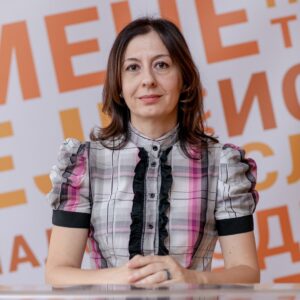
RESEARCH TITLE
Serbia as a destination: who immigrates and who returns?
RESEARCH FIELD
International migration
RESEARCH SUBJECT
Socio-demographic characteristics of the population immigrating and returning to Serbia, and reasons for settling/returning to Serbia
PROBLEM
In conditions of decreasing population, the population settling in Serbia represents a significant demographic resource and human capital. Why is it important to know the number and structure of the population immigrating/returning from abroad?
The increased complexity of migration processes and their causes and consequences in the modern world is reflected in the migrant population. At the same time, the origin, structures, and reasons for migration of the settled population influence the society of the receiving country as well as the migration outcomes and the position of migrants in the society of the receiving country.
It is not the same whether it is immigration or return migration, and thus the need for integration or reintegration of the population into the society of the receiving country. Furthermore, the possibility and success of implementing integration measures depends on the size of the immigrant population and its length of stay in the receiving country, as well as on the structure of this population. Namely, in certain sectors relevant to integration, the implementation of targeted measures to support the integration of the immigrant population is limited if this population is not numerous.
RESEARCH
Based on the additionally processed data of the 2022 Census, the research provides answers to the following questions:
- who immigrates/returns to Serbia?
- why does immigration/return migration occur?
- what are the spatial and temporal patterns of immigration and return migration to Serbia?
- what are the effects of immigration/return migration on the size, spatial distribution and socio-demographic structure of the population of Serbia
RESULT
The share of the immigrants and returnees in the total population of Serbia was 14.2% in 2022. The number of immigrants in the Republic of Serbia is numerically higher than returnees and the ratio of their sizes is 2:1. Geographical, historical, and family ties continue to shape the main directions of immigration and return migration to the Republic of Serbia.
The largest number of immigrants came to the Republic of Serbia from the former republics of the SFRY, while in the more recent wave of immigration in 2022, a significant number of immigrants came from Russia. When it comes to return migration, Germany and Austria have been traditional countries of destination for emigrants from Serbia for decades, and accordingly, the countries from which the largest number of returnees came to the Republic of Serbia. Immigrants and returnees, through participation in internal migration, which follow the internal migration patterns of the rest of the population, contribute to the already pronounced concentration of the population of the Republic of Serbia in urban settlements. The highest impact of immigrants is in the municipalities of Šid, Inđija, and Sremski Karlovci, where their share in the total population exceeds 25%, and of returnees in the municipalities of Malo Crniće, Petrovac na Mlavi, and Golubac where their share in the total population exceeds 14%.
Over 80% of the population immigrating/returning to Serbia is of Serbian nationality, so it is a co-ethnic migration, which significantly facilitates the process of socio-cultural (re)integration. This population is characterized by an unfavourable age structure, which limits their contribution to the demographic renewal of the country. With low participation of young people, as well as a limited fertile contingent, this population cannot significantly influence the size and age structure of the population of the Republic of Serbia.
However, immigrants/returnees are more represented in professions such as managers, officials, legislators, experts, artists, and military personnel, compared to the rest of the population of the Republic of Serbia. In this sense they affect the increase in the share of the population engaged in the above professions in the total population of the Republic of Serbia. Considering the importance of entrepreneurship for ocio-economic development, an analysis of data on the employment status of economically active persons engaged in occupations shows that, compared to the rest of the population of Serbia, immigrants and returnees are more likely to be entrepreneurs, whether they are employers who employ other persons, or they are self-employed. The educational structure of immigrant/returnees employers is more favourable compared to other employers (share of employers with higher education: 34.4% versus 26.3%). Those employers make up 19.8% of the total number of employers in the Republic of Serbia, mostly in the Belgrade region and the Vojvodina region (about one-quarter).

